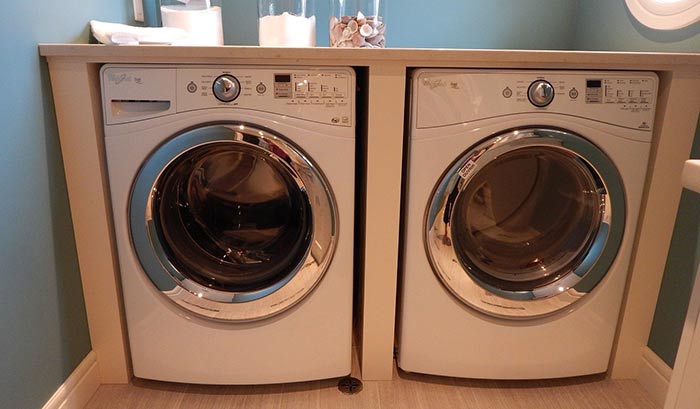The list below includes many appliances and their typical power ratings (in Watts). You can use this information to help you estimate the total amount of Watt-hours that your alternative energy system needs to supply on an average day. Power ratings of most appliances are usually listed on the appliance itself or the manual. For a final calculation of your watt-hour usage, we recommend that you look at each appliance to be powered to find its rated power.
Visit the altE Kill A Watt Database to find the power usage of appliances being used in the real world as recorded by members of the altE Community. You can also buy a power meter specifically designed to measure how much power an appliance consumes.
When determining how many Watt-hours your appliances will use, keep in mind that many of the appliances you use will only be run for an average of a few minutes per day. For instance a 500W weed eater may be used for 1 hour every week. That translates to an average of 71 Watt-hours per day (500W / 7 Days).
Additionally, there are appliances like refrigerators which although appear to be “on” all day, actually are running between 12 to 15 hours a day (turning on and off as needed). Air conditioning units also run on and off all day depending on the cooling needs of the home and the outdoor temperature.
Finally, be aware of “ghost loads”. These are devices that people commonly forget to include in their calculations. These devices typically consume a small amount of energy (less than 1W) but are running 24 hours a day. Examples of typical ghost loads would be AC adapters, clocks, VCRs, TVs, microwaves, and printers. Many of these devices require power to maintain their clocks running (e.g. VCR, TV, and microwave). Although the amount of energy consumed on an hourly basis is small, the fact that they run all day can easily add as much as 100Wh per day.
| Appliance | Watts |
|---|---|
| Air Conditioner | |
| Room* | 1000 |
| Central* | 2000 – 5000 |
| Air Conditioners rated in tons | |
| Per Ton | 3517 |
| e.g., 5 Ton AC Unit | 17585 |
| Blender | 300 |
| Blow Dryer | 1000 – 1500 |
| CB Radio | 5 |
| CD Player | 15 – 30 |
| Ceiling Fan | 10 – 50 |
| Computer | |
| Laptop | 20 – 75 |
| Desktop PC | 80 – 200 |
| Printer | 100 |
| Coffee Maker | 800 |
| Clock Radio | 1 |
| Dishwasher | 1200 – 1500 |
| Dryer (Clothes) | |
| Electric* | 4000 |
| Gas Heated | 300 – 400 |
| Electric Blanket | 200 |
| Electric Clock | 1 |
| Electric Frying Pan | 1200 |
| Freezer | |
| Conventional 14cf (15 hrs/day runtime) |
445 |
| Sun Frost 19cf Freezer | 112 |
| Furnace Blower | 300 – 1000 |
| Garage Door Opener | 350 |
| Heater | |
| Engine Block* | 150 – 1000 |
| Portable* | 1500 |
| Waterbed* | 400 |
| Stock Tank* | 100 |
| Hot Plate | 1200 |
| Iron | 1000 |
| Lightbulbs | |
| Incandescent Bulbs | CFL Bulbs |
| 100 | 23 |
| 75 | 20 |
| 60 | 15 |
| 40 | 11 |
| Microwave | 600 – 1500 |
| Popcorn Popper | 250 |
| Refrigerator/Freezer (runtime in hours/day) | |
| Conventional 20cf (15) | 540 |
| Conventional 16cf (15) | 475 |
| Sun Frost 16cf DC (7) | 112 |
| Sun Frost 12cf DC (7) | 70 |
| Conserv 10.5cf (8) | 60 |
| Conserv 7.5cf (8) | 50 |
| Satellite Dish | 30 |
| Sewing Machine | 100 |
| Shaver | 15 |
| Sink Waste Disposal | 450 |
| Stereo | 10 – 30 |
| Table Fan | 10 – 25 |
| Toaster | 800 – 1500 |
| Tools | |
| Weed Eater | 500 |
| 1/4″ drill | 250 |
| 1/2″ drill | 750 |
| 1″ drill | 1000 |
| 9″ disc sander | 1200 |
| 3″ belt sander | 1000 |
| 12″ chain saw | 1100 |
| 14″ band saw | 1100 |
| 7 1/4″ circular saw | 900 |
| 8 1/4″ circular saw | 1400 |
| Vacuum Cleaner | |
| Upright | 200 – 700 |
| Hand | 150 |
| VCR | 40 |
| Waffle Iron | 1200 |
| Washing Machine | 500 |
*Ideally, these items should not be powered by a PV system, because they are considered inefficient appliances to be powered by solar or wind electric sources.



